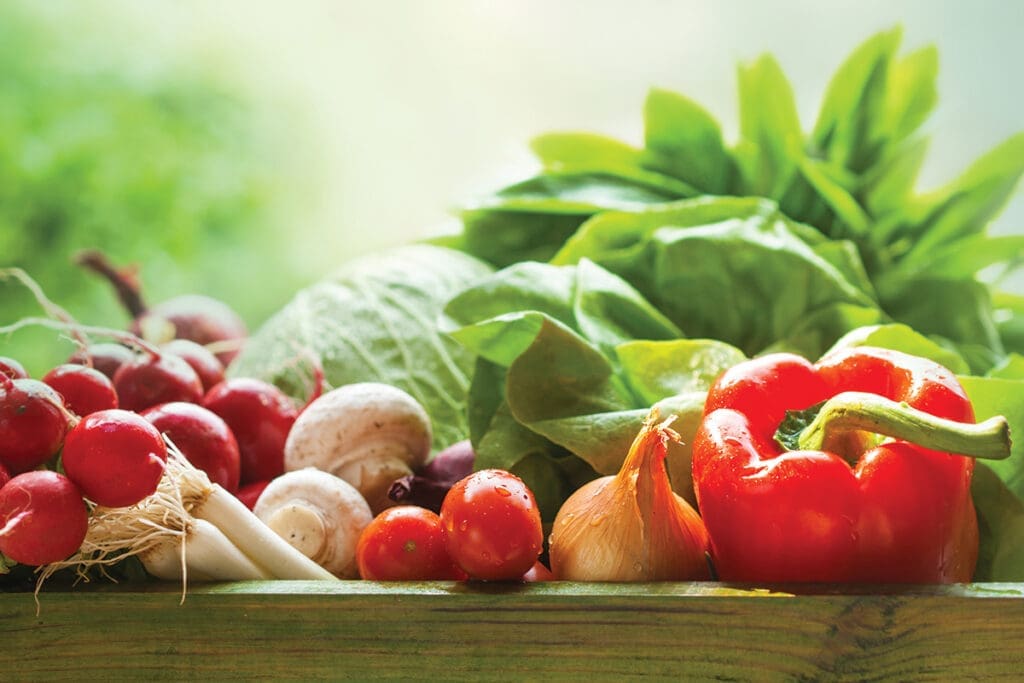 By Kay Leaman, Health Architect, HealthyDay HealthyLife
By Kay Leaman, Health Architect, HealthyDay HealthyLife
Vegetables. We all know we’re supposed to be eating more of them. A salad a day or veggies as the main with meat and starch as sides is a new goal for many. The thing we don’t think about is how to prepare them to get the greatest amount of nutrients in us.
The amount of nutrients in a vegetable is dependent on the dirt it was grown in and when it was harvested. The other factor is the percent of pesticides, etc., that it was exposed to. Our body’s ability to absorb nutrients also depends on how much we chew before swallowing and the health of our digestive system.
Veggies are broken down and absorbed in different ways. The nutrient quality and quantity differ due to the chemical composition changes that happen when exposed to heat.
Let’s break it down…
Minerals such as potassium, calcium and iron are more readily available and absorbed due to the fiber breakdown when the veggie is heated.
Fat soluble nutrients are pushed into our fat and stored for use when needed. A, D, E, and K are some of these and they are less likely to be destroyed by cooking.
Water soluble nutrients such as the B’s and C and antioxidants are absorbed through the cell walls and diffused in the bloodstream. They are more susceptible to heat damage; the higher the heat the more rapidly they degrade.
Raw provides optimal levels of folate (B9) and water-soluble nutrients such as C. These help to protect against oxidative stress (cause of inflammation) and can guard against neurodegenerative diseases, chronic inflammatory disease and some forms of depression. A French expression says ‘It’s not about how fast you eat but on how well you eat.’
There are several cooking methods (No matter what method you use, al-dente or slightly wilted is recommended.)
 When cooking on the stove, which usually involves water use a lower heat setting, you’ll notice that the water turns the color of the veggie being cooked. This is where those nutrients that left the veggies are so DON’T throw out the water. You can use it in shakes, add to gravies, soups, stocks, baking, etc.
When cooking on the stove, which usually involves water use a lower heat setting, you’ll notice that the water turns the color of the veggie being cooked. This is where those nutrients that left the veggies are so DON’T throw out the water. You can use it in shakes, add to gravies, soups, stocks, baking, etc.
Air frying protects the veggies from the heat source which can result in retaining a higher percentage of nutrients.
Between 50-90% of nutrients can be retained when steamed. Steaming can also improve the impact on water soluble vitamins as it limits direct contact with water and heat source.
When sautéing your veggies use low heat and olive oil along with your favorite veggies.
Pressure cooking is one the best choices as the steam can’t escape and veggies can retain 90-95% of their nutrients.
Lastly is roasting. Stir the veggies with a touch of olive oil and your favorite spices. Place them on a grate over the pan (The more surface area that touches the heat source the more nutrient loss occurs.) on a low setting. Remember to keep them al-dente.
Veggies that are better when cooked are spinach, asparagus, tomatoes, mushrooms, potatoes, carrots, celery and green beans.
Lastly, eat veggies that are in season and choose a variety. (Change it up.) Examples could be using shredded cabbage and broccoli slaw in your salads instead of lettuce, zucchini in place of cucumbers (My hubby hates cucumbers, so this is a great sub for us and I get to enjoy both.) Be creative and enjoy all this summer offers.
Here’s to Health!
HealthyDay HealthyLife,
succeed.hdhl@gmail.com






























































